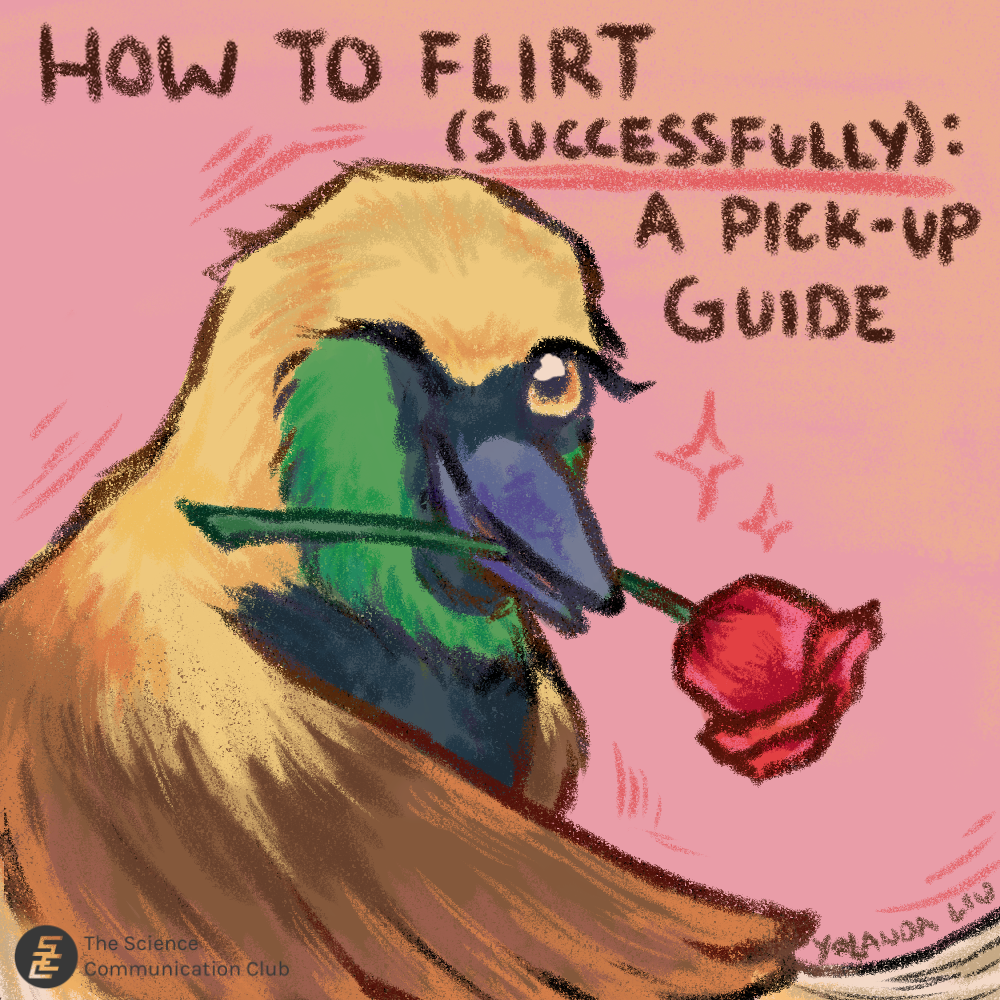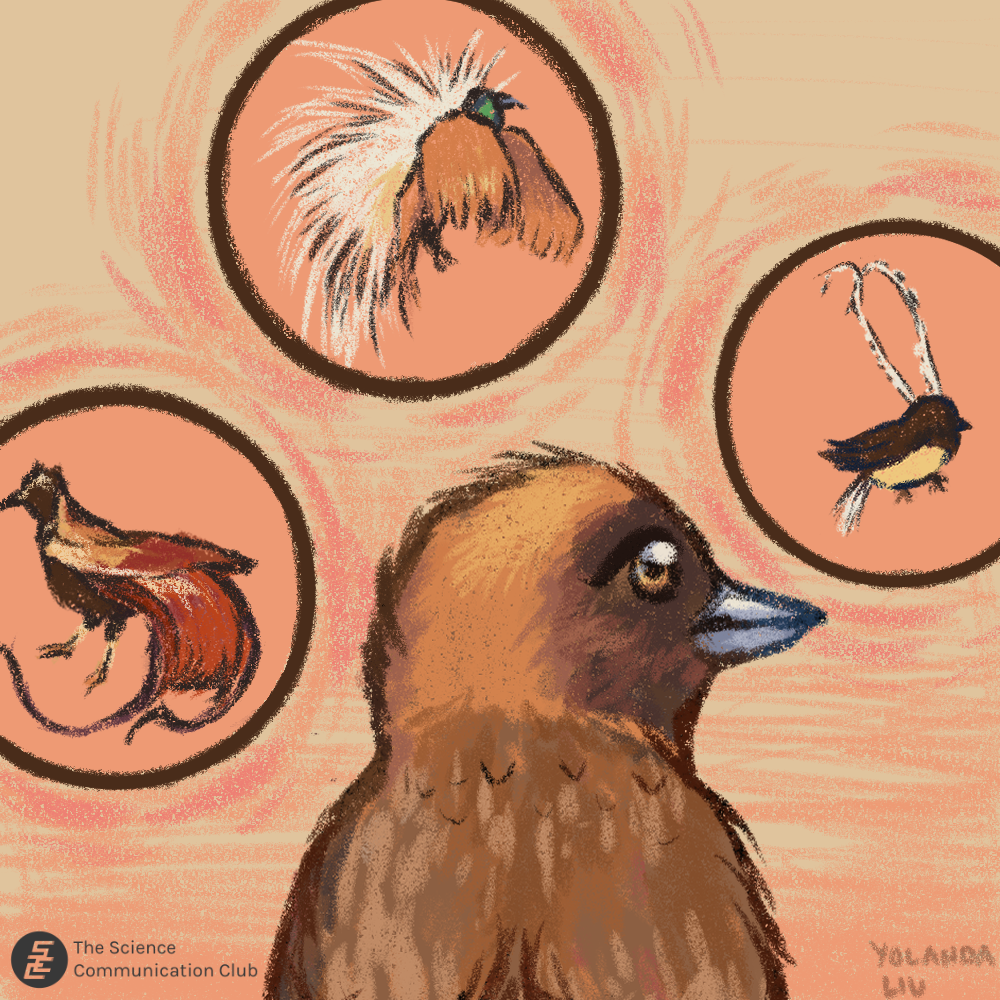
Written by Anita Mazumdar-Moscato
Illustrated by Yolanda Liu
What’s your go-to move when you’re trying to flirt with someone? Are you the type that likes to make them laugh? Maybe you prefer the calm and collected approach, or maybe you go the direct route — no matter which you prefer, these all have one thing in common: the desire to impress. You might think that this is something that is unique to humans; however, there is one species that shares our desire to impress and takes it to the extremes: birds-of-paradise.
Birds of paradise are a family of birds native to Papua New Guinea, the Indonesian islands that surround it, and can also be found in a small part of north-eastern Australia. They’ve long been considered ethereal, even godly creatures and when they were first introduced to the Western world in the 16th century, they immediately became the inspiration for paintings, poetry, and fashion. With 39 different species, birds of paradise come in all shapes and colours, but they are most well-known for the male’s extravagant designs. For example, the male Lophorina superba is known for its iridescent blue-green breast cover and long black cape (National Geographic Society). (Take down some notes for what you should wear next time you see your crush).

Though undeniably impressive, we might ask ourselves: what’s the point? This isn’t essential for survival — in fact, flashy colours inhibit a bird’s chance of survival, working against Darwin’s theory — so it seems odd that these birds would evolve with seemingly superfluous cosmetic traits. The answer lies in the way that these birds evolve: through sexual selection. Darwin’s theory of sexual selection centres around evolution driven by competition for mates, instead of competition for survival. Birds of paradise are lucky in that their natural habitat is free of natural predators and provides as much food as they could ever need. Thus, male birds of paradise have evolved to have the most extravagant, impressive plumage in order to impress potential mates and carry on their lineage.
Though female birds of paradise are quite plain in comparison to their male counterparts, they hold all the power when it comes to reproduction. Females decide who gets to pass on their genes and who does not, so the males are in constant competition with each other to prove their worth. A study by the Cornell Lab of Ornithology suggests that everything in the theatrical mating displays of male birds of paradise is driven by the female. Female birds of paradise choose their mates based on sensory input from the multiple signals that comprise the complex mating rituals that the males perform. This group of physical and behavioural traits shown during breeding displays is dubbed a ‘courtship phenotype’ — when females prefer a specific combination of these traits, that phenotype is more desirable and thus leads to the sexual selection of that courtship phenotype (Ligon et al). If you’re more of a visual learner, here’s a link to a video that shows a bird-of-paradise mating dance.
So the next time you’re wondering how best to impress that cutie you’ve been eyeing, take a page out of Mother Nature’s book! Satisfaction guaranteed 😉
Sources
- Hashem.com. “Psychedelic Smiley Face.” Hashem, Hashem, 22 Jan. 2016, https://hashem.com/psychedelic-smiley-face/.
- Ligon, Russell A., et al. “Evolution of Correlated Complexity in the Radically Different Courtship Signals of Birds-of-Paradise.” PLOS Biology, vol. 16, no. 11, 2018, https://doi.org/10.1371/journal.pbio.2006962.
- National Geographic Society. “Birds-of-Paradise: Beauty Kings.” National Geographic Society, July 2022, https://education.nationalgeographic.org/resource/birds-paradise-beauty-kings.